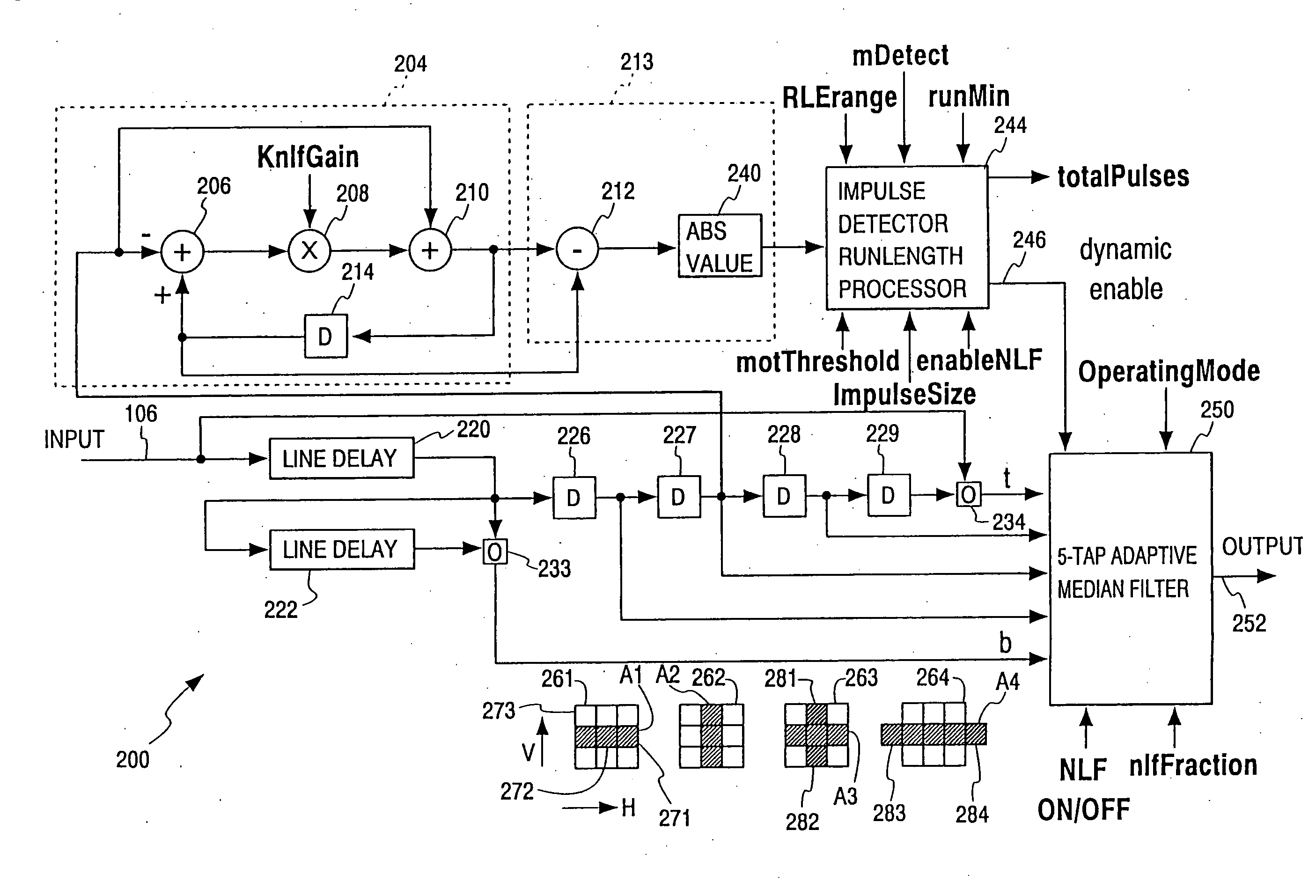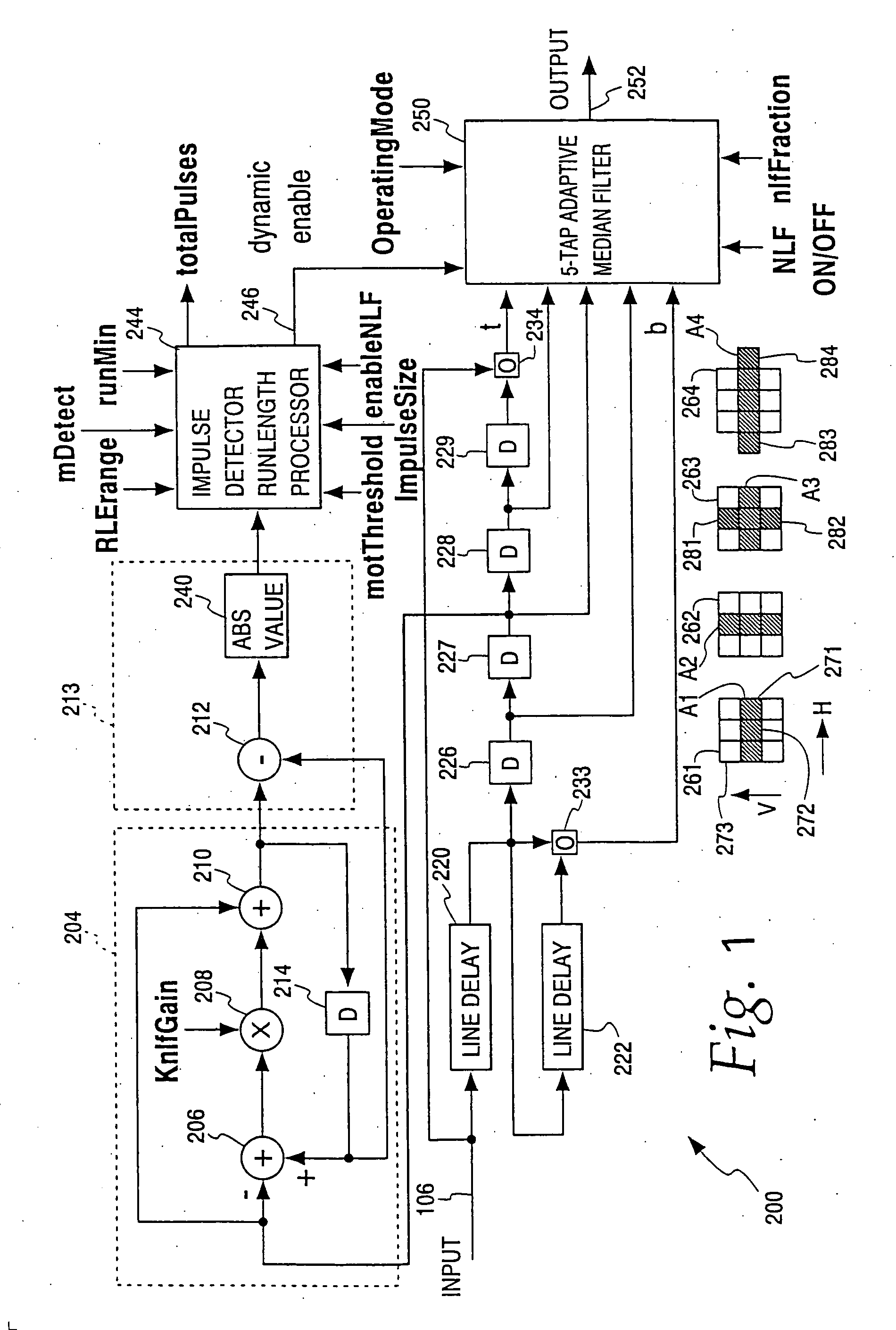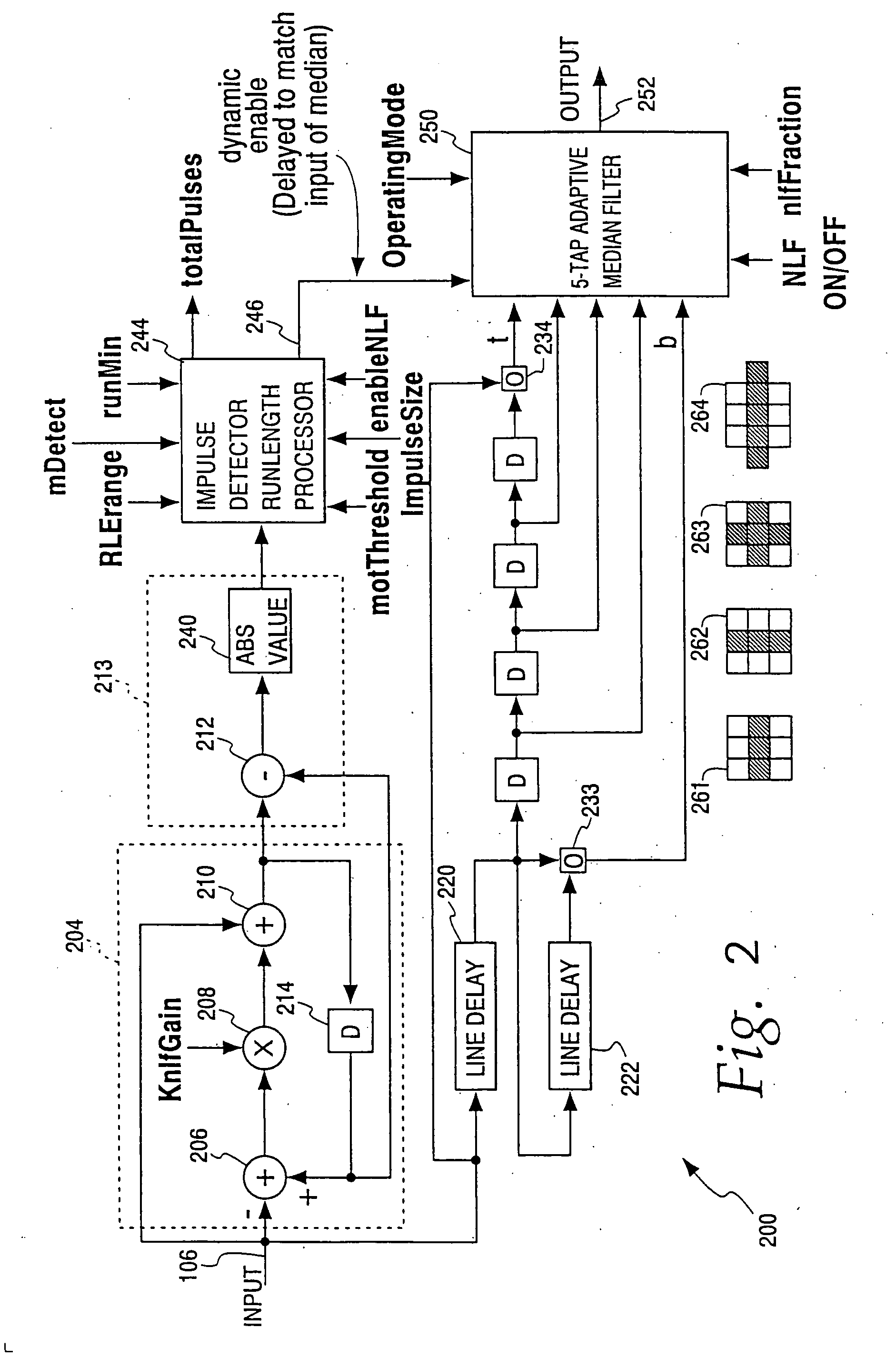Adaptive non-linear noise reduction techniques
a non-linear noise reduction and video pixels technology, applied in the field of video pixels noise reduction, can solve the problems of noise creation, random noise generation, and objectionable image artifacts, and achieve the effect of reducing random noise in video pixels and reducing impulses
- Summary
- Abstract
- Description
- Claims
- Application Information
AI Technical Summary
Benefits of technology
Problems solved by technology
Method used
Image
Examples
Embodiment Construction
[0025] In general, the embodiments shown in the drawings use a combination of spatial and temporal impulse reducing mechanisms to reduce random noise in an input video sequence. The mechanisms may employ filtering that is applied dynamically on a pixel-by-pixel basis by programming the behavior of the different processing modules and by controlling the noise reduction process adaptively according to the output of an impulse detector. Other types of impulse reducing also may be employed, such as software that changes the value of a pixel within a plurality of pixels. The change may increase the value of the lowest-valued pixel that is less than a first threshold and / or decrease the value of the highest valued pixel greater than a second threshold. The embodiments shown in the drawings include an impulse noise reduction filter and the associated modules to control the filtering process on a pixel-by-pixel basis.
[0026] Additional details about the impulse reducer and other aspects of ...
PUM
 Login to View More
Login to View More Abstract
Description
Claims
Application Information
 Login to View More
Login to View More - R&D
- Intellectual Property
- Life Sciences
- Materials
- Tech Scout
- Unparalleled Data Quality
- Higher Quality Content
- 60% Fewer Hallucinations
Browse by: Latest US Patents, China's latest patents, Technical Efficacy Thesaurus, Application Domain, Technology Topic, Popular Technical Reports.
© 2025 PatSnap. All rights reserved.Legal|Privacy policy|Modern Slavery Act Transparency Statement|Sitemap|About US| Contact US: help@patsnap.com



